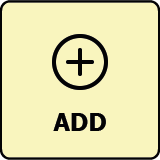Today Toyota announces the all-new 2026 Toyota C-HR Battery Electric Vehicle (BEV), an all-new model set to be a bold entry in its electrified lineup. With an impressive 338 horsepower combined system output, and standard All-Wheel Drive, it has a performance-inspired spirit with a manufacturer estimated 0-60 mph time of around 5 seconds. The C-HR couples its dynamic performance with a coupe-like design, a well-appointed interior, and up-to 25.4-cubic feet of rear cargo space behind the rear seats for compact crossover utility.
The 2026 C-HR BEV brings cutting-edge style and high-tech features. It will be powered by a 74.7 kW battery and have a manufacturer-estimated all-electric range rating of 290 miles*. It will come equipped with a North American Charging System (NACS) port, giving it access to thousands of DC charging stations nationwide. It will also have the convenience of Plug & Charge for a simplified charging experience and be capable of charging on Level One and Level Two AC power sources. Steering wheel-mounted paddle shifters that control regenerative braking power are also standard. When activated, four different levels of regenerative braking power can be selected to convert kinetic energy to electric energy, adding charge to the traction battery.
It will come in SE and XSE grades and have great standard interior features like a 14-inch touchscreen that runs the Toyota Audio Multimedia system, fully digital gauge cluster, dual wireless chargers in the center console, and the Toyota Safety Sense 3.0 system. The cabin also brings comfort, with seating choices from fabric and SofTex®-trim to synthetic suede and SofTex-trim.
On the outside, key standard equipment like a power liftgate, low-profile roof rails, and rain-sensing wipers bring functional value. There will be 18-inch and 20-inch wheel options and a variety of available exterior paint colors in single and two-tone paint options.
Developed from a compact BEV concept Toyota first presented in 2022, the new C-HR BEV is the 20th electrified model to be added to the Toyota lineup. The model carries forward Toyota’s multi-pathway powertrain approach, which includes a variety of models available across its lineup to fit customers’ lifestyles, including BEV, Hybrid, Plug-in Hybrid, and Fuel Cell (CA and Hawaii only) powertrains. The 2026 C-HR BEV is expected to arrive at Toyota dealerships nationwide in 2026.
The Toyota C-HR BEV is designed as an expression of the fun-to-drive, exhilarating character of electric vehicles. Built on Toyota’s dedicated e-TNGA battery electric vehicle platform, its flowing body lines and wide stance convey a dynamic drive. The vehicle’s compact coupe silhouette is formed by Toyota’s signature hammerhead front end flowing seamlessly into a compact cabin and angular rear.
The C-HR has compact crossover proportions with an overall length of 177.9-inches, overall width of 73.6-inches, wheelbase of 108.3-inches, and overall height 63.8-inches. This helps give it spacious accommodation, with generous headroom and ample cabin space. The interior design is clean and open, with a slim driver’s display and easy-to-access center console. For an added touch, it also has customizable ambient lighting for setting just the right mood. Altogether, it has a comfortable, high-tech cabin that is stylish and functional.
It also provides drivers and passengers alike with plenty of comfort and convenience, such as two wireless smartphone chargers and rear cabin USB ports to ensure everyone on board can be connected when on the move; rear cabin air conditioning controls; and an available panoramic roof that brings natural light to all parts of the interior.
The 2026 Toyota C-HR BEV comes equipped with standard AWD with electric motors housed in the front and rear eAxles. Altogether, the model is expected to be capable of going from 0 to 60 miles per hour in around 5 seconds. Its coupe-like lines are complemented by a low center of gravity, thanks to the underfloor-mounted battery pack that is surrounded by a cross-framing structure for overall vehicle rigidity. In addition to the fundamental strength, rigidity and agility of the dedicated BEV platform, suspension parts have been precisely tuned for the new C-HR, including spring and damper performance and the stiffness of the anti-roll bars.
It will have a lithium-ion battery with a total capacity of 74.7-kWh and an 11-kW on-board AC charger. It will have a NACS charging port that is compatible with Level Three DC fast-charging, giving it access to thousands of high-speed charging stations nationwide. When using fast charging the C-HR will be capable of recharging from 10% to 80% battery capacity in around 30 minutes under ideal conditions*. The 2026 C-HR will also be capable of charging on Level One and Level Two AC power sources.
The Toyota C-HR will also have Plug & Charge capability, an industry standard protocol that allows automatic identification, authentication and authorization at selected charging networks, reducing the need for multiple mobile charging applications.
A battery pre-conditioning function is also included on C-HR. This system brings the battery to an optimal temperature for DC fast charging, enabling faster charging in colder climates. This function can be activated manually or automatically by setting the navigation system destination to a fast-charging station.
The 2026 C-HR also features steering wheel-mounted paddle shifters to activate and adjust regenerative braking. Regenerative braking is the process of converting energy created by the movement of the vehicle, also known as kinetic energy, into electrical energy. The driver can adjust the amount of regenerative braking power from four levels using the paddle shifters.
Today Toyota announces the all-new 2026 Toyota C-HR Battery Electric Vehicle (BEV), an all-new model set to be a bold entry in its electrified lineup. With an impressive 338 horsepower combined system output, and standard All-Wheel Drive, it has a performance-inspired spirit with a manufacturer estimated 0-60 mph time of around 5 seconds. The C-HR couples its dynamic performance with a coupe-like design, a well-appointed interior, and up-to 25.4-cubic feet of rear cargo space behind the rear seats for compact crossover utility.
The 2026 C-HR BEV brings cutting-edge style and high-tech features. It will be powered by a 74.7 kW battery and have a manufacturer-estimated all-electric range rating of 290 miles*. It will come equipped with a North American Charging System (NACS) port, giving it access to thousands of DC charging stations nationwide. It will also have the convenience of Plug & Charge for a simplified charging experience and be capable of charging on Level One and Level Two AC power sources. Steering wheel-mounted paddle shifters that control regenerative braking power are also standard. When activated, four different levels of regenerative braking power can be selected to convert kinetic energy to electric energy, adding charge to the traction battery.
It will come in SE and XSE grades and have great standard interior features like a 14-inch touchscreen that runs the Toyota Audio Multimedia system, fully digital gauge cluster, dual wireless chargers in the center console, and the Toyota Safety Sense 3.0 system. The cabin also brings comfort, with seating choices from fabric and SofTex®-trim to synthetic suede and SofTex-trim.
On the outside, key standard equipment like a power liftgate, low-profile roof rails, and rain-sensing wipers bring functional value. There will be 18-inch and 20-inch wheel options and a variety of available exterior paint colors in single and two-tone paint options.
Developed from a compact BEV concept Toyota first presented in 2022, the new C-HR BEV is the 20th electrified model to be added to the Toyota lineup. The model carries forward Toyota’s multi-pathway powertrain approach, which includes a variety of models available across its lineup to fit customers’ lifestyles, including BEV, Hybrid, Plug-in Hybrid, and Fuel Cell (CA and Hawaii only) powertrains. The 2026 C-HR BEV is expected to arrive at Toyota dealerships nationwide in 2026.
The Toyota C-HR BEV is designed as an expression of the fun-to-drive, exhilarating character of electric vehicles. Built on Toyota’s dedicated e-TNGA battery electric vehicle platform, its flowing body lines and wide stance convey a dynamic drive. The vehicle’s compact coupe silhouette is formed by Toyota’s signature hammerhead front end flowing seamlessly into a compact cabin and angular rear.
The C-HR has compact crossover proportions with an overall length of 177.9-inches, overall width of 73.6-inches, wheelbase of 108.3-inches, and overall height 63.8-inches. This helps give it spacious accommodation, with generous headroom and ample cabin space. The interior design is clean and open, with a slim driver’s display and easy-to-access center console. For an added touch, it also has customizable ambient lighting for setting just the right mood. Altogether, it has a comfortable, high-tech cabin that is stylish and functional.
It also provides drivers and passengers alike with plenty of comfort and convenience, such as two wireless smartphone chargers and rear cabin USB ports to ensure everyone on board can be connected when on the move; rear cabin air conditioning controls; and an available panoramic roof that brings natural light to all parts of the interior.
The 2026 Toyota C-HR BEV comes equipped with standard AWD with electric motors housed in the front and rear eAxles. Altogether, the model is expected to be capable of going from 0 to 60 miles per hour in around 5 seconds. Its coupe-like lines are complemented by a low center of gravity, thanks to the underfloor-mounted battery pack that is surrounded by a cross-framing structure for overall vehicle rigidity. In addition to the fundamental strength, rigidity and agility of the dedicated BEV platform, suspension parts have been precisely tuned for the new C-HR, including spring and damper performance and the stiffness of the anti-roll bars.
It will have a lithium-ion battery with a total capacity of 74.7-kWh and an 11-kW on-board AC charger. It will have a NACS charging port that is compatible with Level Three DC fast-charging, giving it access to thousands of high-speed charging stations nationwide. When using fast charging the C-HR will be capable of recharging from 10% to 80% battery capacity in around 30 minutes under ideal conditions*. The 2026 C-HR will also be capable of charging on Level One and Level Two AC power sources.
The Toyota C-HR will also have Plug & Charge capability, an industry standard protocol that allows automatic identification, authentication and authorization at selected charging networks, reducing the need for multiple mobile charging applications.
A battery pre-conditioning function is also included on C-HR. This system brings the battery to an optimal temperature for DC fast charging, enabling faster charging in colder climates. This function can be activated manually or automatically by setting the navigation system destination to a fast-charging station.
The 2026 C-HR also features steering wheel-mounted paddle shifters to activate and adjust regenerative braking. Regenerative braking is the process of converting energy created by the movement of the vehicle, also known as kinetic energy, into electrical energy. The driver can adjust the amount of regenerative braking power from four levels using the paddle shifters.











